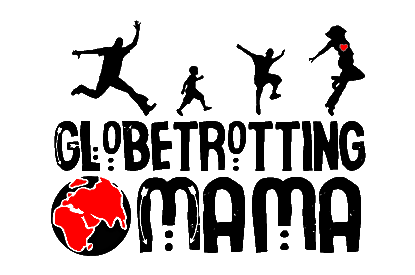The story that Right To Play Canada shared with me the other day is one that I knew, immediately upon hearing it, would be one I’d need to share with you.
Because I get it:
I know that we’re all busy. I know that every night can feel like one more straw could be the one that breaks our backs. I know that we’re trying to balance raising kids, being good partners in our personal and professional lives, remembering to smell the flowers and being good people. And that sometimes even something as simple as me asking you to vote on Facebook for the “We Build Peace” project can feel like another item on a list that’s already too long.
It’s a struggle I’ve become even more familiar with since returning home from our year away.
There’s nothing like stepping off the hamster wheel of life, to let you know just how fast it is spinning. (And trying to step back on? Whole other story.)
And it’s why I’m always amazed at people who do it well; who find the time where there can’t possibly be any, and do incredible things with it.
And when I hear what it was that caused them to stumble off their hamster wheel, stop, refocus and change the trajectory of their life, I’m usually blown away.
That’s what happened when I was told the story of how Right To Play started.
Johann Olav Koss, Norwegian Speed skating powerhouse and Olympic hero, was visiting Eritrea and stumbled on a group of kids in the field. He asked what they liked to do and heard that “football” (our soccer) was high on their list and so he asked if he could play with them.
He could they said, but they’d have to wait for a certain child to arrive first.
And so they waited. And waited. And waited.
As the story goes, Johann was a little annoyed that this one child was holding up the game and when he arrived, asked him why they had had to wait for him to play.
The answer?
“I’m the only one who has long sleeves.”
The boy’s shirt was quickly removed, wrapped into a “ball” with the arms tied together to secure it in place.
The game could now begin.
These kids had never played with a real ball and that moment led to a movement.
Johann would go on to break three World Records and claim three Gold medals in the 1994 Olympics. And when he stood up at a press conference where he could’ve talked only of himself and his accomplishments after years of hard work, he spoke about those kids. He asked his countrymen and women to donate for each gold medal won by Norway. He asked children to send their used sports equipment to him.

English: Johann Olav Koss, fmr olympic speedskater Norsk (bokmål)â¬: Johann Olav Koss, olympisk skøyteløper og lege (Photo credit: Wikipedia)
Over 10 days he would raise $18million USD from Norwegians. This despite the fact there are only 5 million people in the country.
The gifts were delivered to the kids and a movement was born.
Johann would go on to get his medical degree, move to Canada and eventually launch Right To Play working first in refugee camps and eventually moving out into the various communities.
Today there are Right To Play operations happening in 20 countries around the world. The play based programs are helping to educate local children through the work of 500 staff and 12,000 active volunteers who are all local to the place where they are working.
Because Right To Play trains local adults in the games and educational aspects of their tenets of Education, Peace, Leadership, Health and Gender Equality, the changes are happening from within the community. The program strategically focuses on building strength within the community so that it can self-sustain with minimal effort from outsiders.
And Right To Play trained locals can then spread the movement beyond any one location in a country. Many are teachers and use the games and techniques in schools and neighbouring communities – passing on the learning far beyond the reach of one volunteer who pops in to help.
It also means that those of us who would like to help on the ground in Africa, really can’t do so.
What we can do?
Help to raise awareness here.
The more people who know about the things that Right To Play is doing, the easier it will be for the not for profit organization to raise funding to help carry out its work. That’s why we’re asking you to click.
And you can volunteer to help with campaigns here in Canada as well.
When you click on the Right to Play Facebook link to vote you’ll also have the opportunity to share your contact information. Do so and you’ll receive a newsletter that keeps you posted on activities that could use an extra pair of hands in your neighbourhood.
And who knows, it could be at one of those very events that you find your own reason to “stumble off the wheel.”
I am proud to be one of the six parent ambassadors working on the Level The Field program for Right To Play Canada. Please vote for “We Build Peace” by clicking this link, liking their Facebook page and scrolling down to find my project with Olympian Clara Hughes. The ambassadors with the most votes will continue to work with Right To Play in the Spring, observing their work on the ground as they carry out their projects. I’d be honoured to have the chance.







Leave A Comment